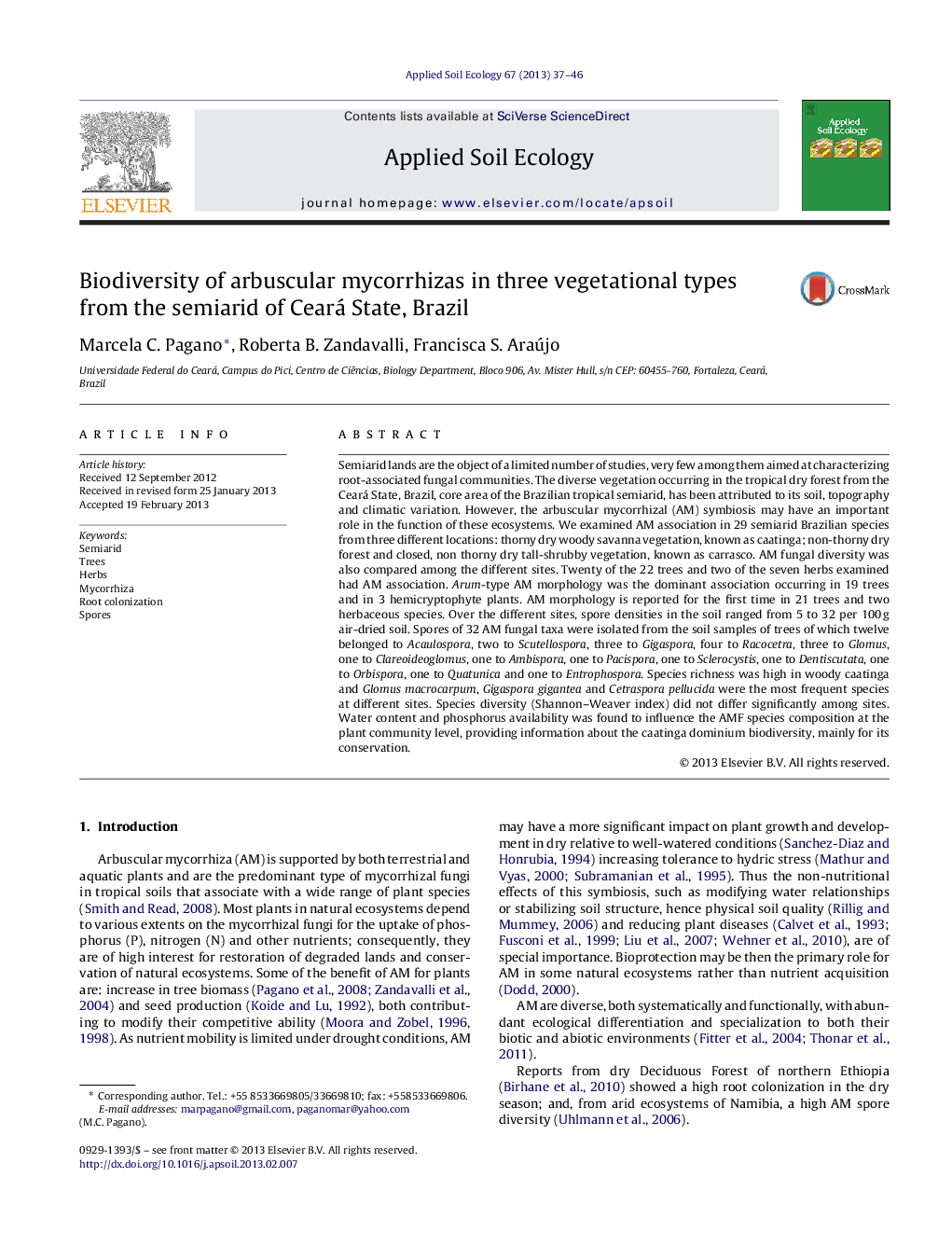| کد مقاله | کد نشریه | سال انتشار | مقاله انگلیسی | نسخه تمام متن |
|---|---|---|---|---|
| 4382550 | 1617816 | 2013 | 10 صفحه PDF | دانلود رایگان |

Semiarid lands are the object of a limited number of studies, very few among them aimed at characterizing root-associated fungal communities. The diverse vegetation occurring in the tropical dry forest from the Ceará State, Brazil, core area of the Brazilian tropical semiarid, has been attributed to its soil, topography and climatic variation. However, the arbuscular mycorrhizal (AM) symbiosis may have an important role in the function of these ecosystems. We examined AM association in 29 semiarid Brazilian species from three different locations: thorny dry woody savanna vegetation, known as caatinga; non-thorny dry forest and closed, non thorny dry tall-shrubby vegetation, known as carrasco. AM fungal diversity was also compared among the different sites. Twenty of the 22 trees and two of the seven herbs examined had AM association. Arum-type AM morphology was the dominant association occurring in 19 trees and in 3 hemicryptophyte plants. AM morphology is reported for the first time in 21 trees and two herbaceous species. Over the different sites, spore densities in the soil ranged from 5 to 32 per 100 g air-dried soil. Spores of 32 AM fungal taxa were isolated from the soil samples of trees of which twelve belonged to Acaulospora, two to Scutellospora, three to Gigaspora, four to Racocetra, three to Glomus, one to Clareoideoglomus, one to Ambispora, one to Pacispora, one to Sclerocystis, one to Dentiscutata, one to Orbispora, one to Quatunica and one to Entrophospora. Species richness was high in woody caatinga and Glomus macrocarpum, Gigaspora gigantea and Cetraspora pellucida were the most frequent species at different sites. Species diversity (Shannon–Weaver index) did not differ significantly among sites. Water content and phosphorus availability was found to influence the AMF species composition at the plant community level, providing information about the caatinga dominium biodiversity, mainly for its conservation.
► We study three vegetation types which have floristic and abiotic differences.
► We examine changes in the level of mycorrhizal colonization, AMF spore densities and diversity.
► Soil moisture, P availability and plant type influence AMF species composition.
► Increasing information will help biodiversity conservation in the caatinga dominium of the Brazilian semiarid.
Journal: Applied Soil Ecology - Volume 67, May 2013, Pages 37–46